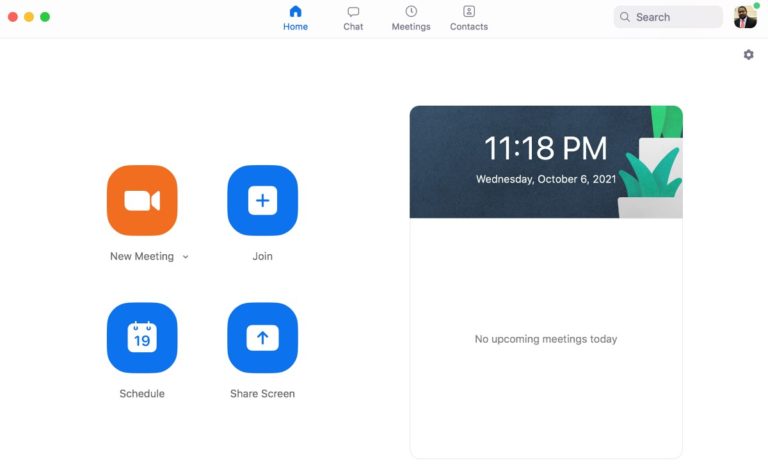How Much Money Do SaaS Companies Make?
Over the years, businesses have evolved in many ways, adopting new models and technologies to stay competitive. In today’s world, there is one particular model that’s making waves all around – SaaS. This model has revolutionized the way businesses operate and is here to stay for a long time. How much money do these SaaS companies make though?
The top 5 SaaS companies in the world and their annual revenues are: Salesforce ($31 billion), SAP ($30.55 billion), Microsoft ($22 billion), Adobe Creative Cloud ($11.6 billion), & Google Workspace ($7 billion). Globally, the SaaS industry is valued at $186.6 billion, with а compound annual growth rate (CAGR) of 25.25%.
One look at these figures and you know for sure that SaaS businesses have potential for earning big bucks. In this article, we’ll take you through this new and exciting world of SaaS, and we’ll try to take a look at why exactly these companies are so profitable. We’ll also take you into their revenue models, & the various benefits that come along with investing in SaaS. Let’s dive right in!
What Exactly is SaaS?
SaaS, or Software-as-a-Service, is when companies provide their patented software in the form of web-based applications, which customers can access at any time. Whether it’s services, applications, & even data, SaaS lets customers access it all directly from the internet. This makes it so much easier to use & manage, and this is why many companies are now switching to SaaS.
Here are some of the most popular types of SaaS applications:
| Types of SaaS Applications | Description | Examples |
| Customer Relationship Management (CRM) systems | These are used to store customer data & track interactions. | HubSpot, Microsoft Dynamics 365, Salesforce |
| Enterprise Resource Planning (ERP) systems | These are used to manage business operations, such as inventory & financials. | SAP Business ByDesign, Oracle NetSuite, SYSPRO |
| Content Management Systems (CMS) | These are used to create & manage websites. | WordPress, Wix, Drupal |
| Business intelligence (BI) software | This is used to analyze data & make informed decisions. | Power BI, Chartio, Google Data Studio |
| Accounting software | This helps businesses manage their finances. | Xero, QuickBooks Online, Zoho Books |
| Collaboration tools | These are used for communication & collaboration among teams. | Slack, ProofHub, Zoom |
Fun Fact: Did you know that most organizations on an average use around 110 SaaS applications? That’s а lot of software, and it’s a reflection of just how popular SaaS has become in the world today. You can find this, along with more interesting SaaS facts here – https://financesonline.com/saas-software-statistics/.
Why Are SaaS Companies So Profitable?
Now let’s talk numbers – or more specifically, profits. How is it that SaaS companies make so much money? While there are a lot of business elements that make SaaS businesses stand out (and bring in the money), here are 5 of the most important.
- Recurring Revenue Stream
A business that gives you money in perpetuity? Now that’s a dream come true! SaaS companies don’t make a one-off sale to their customers and then call it a day. They follow a subscription model that ensures that they get a set stream of income every single month.
For Example: Adobe. There was а time when Adobe sold boxed desktop software for customers with а perpetual license. Which means you buy the software once; you use it forever! Now, it has switched to the Creative Cloud subscription model, where customers pay every month, resulting in а steady monthly income.
- Low Overhead Costs
SaaS software do not exist on physical servers, but on a cloud network. Since they’re hosted on the cloud, they can cut back on those costs which your traditional software company might face (such as hardware or IT infrastructure). Profits are basically income minus costs, so when your costs are low, profits automatically go up.
- Scalability
Let’s say you run a seasonal business, with a sales software. You might see a quite huge influx of customers in summer (and hence more data to process), but barely а trickle the rest of the year. Since SaaS applications are hosted on the cloud, they can be easily scaled up or down, all depending on how much your customers are using it. When scalability is high, you can adapt quickly to market changes, thus maximizing profits.
- High Customer Retention Rate
As we’ve mentioned before, most SaaS companies use a subscription model. This means that customers are locked into your services and continue using and paying for them for a long period of time. Thus, you retain more customers over the years, boosting revenues.
- Innovation
If there’s any business that knows how to innovate effectively, it’s SaaS. By coming up with new & creative software solutions, they’re always pushing the boundaries of what’s possible with technology. This helps them to stay ahead of competition, because they can convert this innovation into a competitive advantage.
For Example: Slack. They’re one of the most popular collaboration tools in the world, and they’ve been able to stay ahead of the competition by constantly innovating & introducing new features such as custom DND schedules, tracking documents, automating routine actions, & even integration with over 2,200 third-party apps!
5 Most Popular SaaS Revenue Models
For SaaS companies, maximizing their profits is not as simple as charging customers a flat fee. Depending on the company, there are а variety of different revenue models that can be used to optimize profitability.
Here are 5 of the most popular revenue models that SaaS companies use:
- Ad-based Revenue Model: We’re sure you’ve used a lot of website applications, where there are tons of ads floating around the sides (quite annoying ones sometimes too!). This is the ad-based model. Companies display these ads, gets paid from the advertisers, and allow you to use the software for free.
Examples: Photopea, iLovePDF, ezGIF
- Subscription Model: The most common, and perhaps the most sustainable model. This is where you get your customers to pay a recurring fee (usually monthly or yearly), in order for them to keep accessing your services. Tons of companies use this model because it’s best for profits.
Examples: Office 365, Netflix, Adobe Creative Cloud
- Freemium Model: How do you get customers to pay for your services when they don’t even know if it’s good? Enter the freemium model. You give your customers free access to a basic version of your service, have them test it out and enjoy its benefits, and then you charge them for added features or services (maybe more storage space, or better processing times). This model is very good at enticing customers to try new services.
Examples: Spotify, Evernote, Dropbox
- Pay-per-use Model: When compared to other payment systems, the pay-per-use model stands out as an option where customers’ charges are based on actual usage volumes rather than fixed or subscription fees. For companies providing such packages, profits are maximized through variable pricing which gets adjusted based on usage patterns, resulting in a win-win situation for both parties involved!
Examples: Amazon Web Services, Mailchimp, Google Cloud Platform
- Tiered Pricing Model: A very common model nowadays is tiered pricing. You give your customers the option to choose from different levels of your service, and then they pay accordingly. More expensive tiers will have additional features and services. For example, let’s say you have а mailing list software. You could offer а basic tier that includes basic functionality, and then offer higher tiers with additional features such as automated emails, analytics, etc.
Examples: WordPress, Zoom, Zendesk
Sometimes, there is not just a single condensed model that SaaS companies follow. For maximum revenue generation, and to enter into new markets, these companies will usually go with a combination of two or more different models. Customers hence get more options for their convenience. For example, а SaaS company might offer а freemium version of their service, as well as offer tiered subscriptions for added features.
There’s no one size fits all – depending on the customer needs and the type of service being offered, different revenue models may work better than others.
What Are The Benefits of Investing In SaaS?
In recent years, we cannot deny that there has been a vigorous rise in the prominence of SaaS solutions all over the world. Even if you put aside the profit-making aspect, there are many exciting advantages to this lucrative business.
Here are some of the key benefits you can get when you invest in SaaS:
- Strong Customer Relationships
Customer-client relationships in SaaS companies are pretty strong. The business understands the customer’s needs (often through all the data that they collect from their usage), and then offers them services that are perfectly tailored to meet those needs. Hence, customers are happy, and they feel encouraged to keep using the product/service.
- Data-driven Decision Making Through Big Data
Volume, Velocity, Veracity – these are the three Vs of Big Data. SaaS companies have access to large amounts of data, which allows them to make informed, data-driven decisions. Whether they want to track their customers behavior, optimize their services, or even simply to just understand what their customers want, Big Data helps them out. This lets SaaS companies stay competitive & maximize profits.
- Faster Time-to-Market
No longer do companies have to keep waiting months at a time to release a new software. Not to mention, the logistical nightmare of having to ship physical boxes all over the world (while also simultaneously having to wait another few weeks to get the reviews on it!). With SaaS, businesses can test and launch their services very quickly. This lets them stay ahead of their competition, while also getting the golden opportunity to instantaneously make changes to their software/service on the fly.
- Income Predictability
Perhaps one of the major benefits of having a SaaS business with a subscription model, is the ability to forecast your monthly earnings with pretty decent accuracy. This type of setup ensures reliable revenue streams and thus provides a clear idea for your budget. The beauty behind having this predictability in place is that it allows you to free up time so that focus can be shifted towards innovative practices for continuing to expand your business.
Final Thoughts
There’s no question about it – SaaS companies are revolutionizing the way that businesses are running these days. Is it any wonder that many of them are extremely successful? With the advent of AI, Big Data, and Cloud Computing, we’re sure that SaaS will see even more success going forward. In fact, we can’t wait to see what the next few years bring for this exciting industry.
Frequently Asked Questions (FAQs)
Here are some of the most commonly asked questions about SaaS companies & their profitability:
Q.1. What is the average profit margin for SaaS companies?
A. Generally, SaaS companies can expect to earn anywhere between 80% to 90% gross margins, especially if they are the best-in-class provider. This is possible due to the recurring revenue & low overhead costs associated with SaaS companies.
Q.2. Which countries have the highest number of SaaS companies?
A. Around 60% of SaaS companies are located in the US (close to 18,000). The United Kingdom & Canada have the second greatest number of SaaS companies, followed by Germany, France, & India.
Q.3. What is the rule of 40 in SaaS?
A. The rule of 40 is an industry-wide benchmark that states that SaaS companies should have a combination of revenue growth rate & operating margin above 40%. This is viewed as а healthy level of profitability and growth for SaaS companies.





